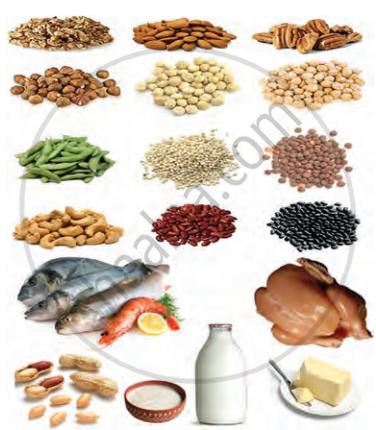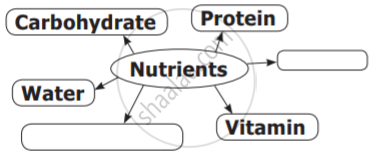Topics
Management of Sporting Events
- Functions of Sports Events Management
- Formation of Committees
- Types of Organising Committee
- Tournament and Its Types
- Fixtures, Byes and Seeding
- Procedure for Drawing Knock - Out Fixture
- Procedure to Draw League Or Round Robin Fixture
- Procedure to Draw Combination Fixture
- Intramural Tournaments - Objectives and Significance
- Intramural Tournaments - Objectives and Significance
- Extramural Tournament - Objectives and Significance
- Extramural Tournament - Objectives and Significance
- Community Sports – Purpose and Benefits
Children and Women in Sports
- Introduction to Exercise Guidelines of WHO for Different Age Groups
- WHO Exercise Recommendations for Children Under 5 Years of Age
- WHO Exercise Recommendations for Children and Youth 5-17 Years
- WHO Exercise Recommendations for Adults 18-64 Years
- WHO Exercise Recommendations for Adults 65 Years and Above
- Posture and Its Categories
- Common Postural Deformities: Knock Knees
- Common Postural Deformities: Flat Foot
- Common Postural Deformities: Round Shoulders
- Common Postural Deformities: Kyphosis
- Common Postural Deformities: Lordosis
- Common Postural Deformities: Scoliosis
- Common Postural Deformities: Bow Legs
- Women Participation in Sports
- Physical, Psychological, and Social Benefits of Sports in Women
- Special Consideration: Menarche and Menstrual Dysfunction
- Female Athlete Triad
- Components of Female Athlete Triad
Yoga as Preventive Measure for Lifestyle Disease
- Yoga Asanas to Prevent Obesity
- Yoga Asanas to Prevent Diabetes Mellitus
- Yoga Asanas to Prevent Bronchial Asthma
- Yoga Asanas to Prevent Hypertension
- Yoga Asanas to Prevent Back Pain and Arthritis
- Tadasana
- Katichakrasana
- Pavanmuktasana
- Matsyasana
- Halasana
- Paschimottasana
- Ardha Matsyendrasana
- Dhanurasana
- Ushtrasana
- Surya Bhedhana Pranayama
- Bhujangasana
- Shalabhasana
- Supta – Vajrasana
- Mandukasana
- Gomukhasana
- Yogamudra
- Kapalabhati
- Urdhvahastottansana
- Uttanmandukasana
- Vakrasana
- Anulom-Vilom
- Uttanpadasan
- Ardha - Halasana
- Sarala Matyasana
- Makarasana
- Shavasana
- Nadi - Shodhana Pranayam
- Sheetali Pranayama
- Ardha Chakrasana
- Bhadrasana
Physical Education and Sport for Children with Special Needs
- Radio Interview with Desmond Green
- Introduction to Organizations Promoting Disability Sports
- Organizations Promoting Disability Sports: Paralympics
- Organizations Promoting Disability Sports: Special Olympics
- Organizations Promoting Disability Sports: Deaflympics
- Concept of Classification and Divisioning in Sports
- Classification in Paralymics
- Divisioning in Sports by Special Olympics
- Encouraging Inclusion Through Physical Education and Sports
- Inclusion - Its Needs and Implication
- Advantages of Physical Activities for Children with Special Needs (CWSN)
- Strategies to Make Physical Activities Accessible for Children with Special Needs (CWSN)
Sports and Nutrition
- A Balanced Diet
- Nutrients and Nutrition
- Carbohydrates
- Proteins
- Fats (Lipids)
- Water
- Vitamin and Minerals
- Component of Food: Minerals
- Nutritive and Non-Nutritive Components of Diet
- Healthy Weight
- Eating for Weight Control
- The Pitfalls of Dieting
- Food Intolerance
- Food Myths
- Importance of Diet in Sports
- Carbohydrates in Sports and Exercise
- Proteins for Exercise and Training
- Fat Intake in Sports and Training
- Vitamins and Minerals Intake in Sports and Training
- Pre-exercise or Pre-event Meal Requirements in Sports
- During Exercise Meal Requirements in Sports
- Post Training or Sports Competition Meal Requirements in Sports
Test and Measurement in Sports
- Fitness Test – SAI Khelo India Fitness Test in School
- Body Composition (BMI)
- Plate Tapping Test
- Flamingo Balance Test
- Abdominal (Partial Curl-up)
- Push Ups (Boys)/Modified Push Ups (Girls)
- Sit and Reach
- 600 MTR Run/Walk
- 50 MTR Dash (Standing Start)
- Measurement of Cardio-Vascular Fitness
- Computing Basal Metabolic Rate (BMR)
- Rikli and Jones Senior Citizen Fitness Test
- 30 Second Chair Stand Test
- Arm Curl Test
- Chair Sit and Reach Test
- Back Stretch
- Foot Up and Go
- Minute Walk Test
- Minutes Step Test
- Johnson – Metheny Test of Motor Education
Physiology and Injuries in Sports
- Physiological Factors Determining the Component of Physical Fitness
- Physical Fitness Components Determined by the Physiological Factors
- Effect of Exercise on Muscular System
- Types of Cardiorespiratory System
- Effects of Exercise on Cardiovascular System
- Effects of Exercise on Respiratory System
- Physiological Changes Due to Ageing
- Sports Injuries
- Classification of Sports Injuries
- Causes, Prevention, and Treatment of Soft Tissue Injuries
- Causes, Prevention, and Treatment of Hard Tissue Injuries
Biomechanics and Sports
- The Impossible Kick
- Biomechanics
- Application of Newton's First Law of Motion (Law of Inertia) in Sports
- Application of Newton's Second Law of Motion (Law of Momentum) in Sports
- Application of Newton's Third Law of Motion (Law of Reaction) in Sports
- Levers and Its Components Used in Sports
- Types of Levers Used in Sports
- Application of Human Leverage System in Sports
- Equilibrium and Its Types in Sports
- Factors Increasing Equilibrium in Sports
- Centre of Gravity and Its Application in Sports
- Friction and Its Types in Sports
- Methods of Reducing Friction
- Advantages and Disadvantages of Friction in the Field of Sports
- Projectile in Sports
- Factors Affecting Projectile Trajectory/ Flight Path in Sports
- Application of Projectile in Sports
Psychology and Sports
- Personality: Concept and Definition
- Types of Personality
- Carl Jung’s Theory of Personality
- Big Five Factor Model of Personality: (Ocean)
- Meaning of Motivation
- Intrinsic and Extrinsic Motivation
- Motivation Techniques
- Motivation and Sports
- Exercise Adherence
- Reason to Exercise
- Benefits of Regular Exercise
- Strategies for Enhancing Adherence to Exercise
- Aggression in Sports
- Types of Aggression
- Aggression Management: A Challenge in Sports
- Psychological Attributes in Sports: Self Esteem
- Psychological Attributes in Sports: Mental Imagery
- Psychological Attributes in Sports: Self Talk
- Psychological Attributes in Sports: Goal Setting
Training in Sports
- Flying Sikh, His Tough Fitness Routine
- Concept of Talent Identification and Talent Development in Sports
- Stages of a Long-term Talent Identification System in Sports and Games
- Classification of the Talent Identification and Development Process
- Introduction to Sports Training Cycle – Micro, Meso, Macro Cycle
- Strength and Its Classification
- Methods to Develop Strength
- Preventive Measures in Strength Training
- Meaning of Endurance
- Types of Endurance
- Methods to Develop Endurance
- Speed and Its Types in Sports
- Methods to Develop the Speed of an Individual
- Flexibility and Its Importance
- Types of Flexibility
- Methods to Improve Flexibility
- Coordinative Abilities and Its Types
Proteins:
Proteins are important substances that help our body grow and repair itself. They are sometimes called the "building blocks" of the body.
- Proteins help in building muscles, bones, skin, and blood. They help in healing wounds and repairing damaged tissues.
- Proteins are also important for making enzymes and hormones, which help the body work properly.
- Proteins come from both plants and animals. Animal sources: eggs, fish, chicken, meat, and milk and milk products. Plant sources: Beans, lentils, nuts, soybeans, and peas
- If we don’t eat enough protein, our bodies might not grow properly. It can also make us weak and affect our immune system, which helps us fight illnesses.
- The amount of protein we need depends on our age and activity level. Children need protein for growth, and adults need it to stay healthy and strong.

Major sources of protein
Our body requires carbohydrates, fats and proteins in large proportions. These food constituents are called macronutrients.

If you would like to contribute notes or other learning material, please submit them using the button below.

